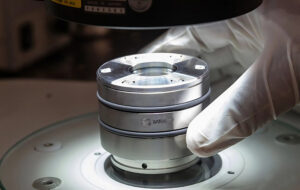On December 3, 2014, the Hayabusa 2 mission was launched by Japan to investigate asteroid Ryugu, more than 300 million km from Earth. After four years of travel, the probe arrived at the destination, collected samples from the rock surface and handed the capsule with the material in a landing inside Australia in December 2020while the mother spaceship followed a trip on an extended mission towards the 1998 Ky26 asteroid, which should be reached in 2031.
Since the return of samples, scientists from various institutions have analyzed about 5.4 grams of collected material. One of the most recent findings, made by a team from the University of Hiroshima, has just been published in the scientific journal METEORITICS & PLANETARY SCIENCE And it brings surprising information.
The researchers identified a rare mineral called Djerfisherita, which usually only forms in environments with temperatures above 300 ° C. The presence of this mineral in the Asteroid Ryugu was considered unexpected.
Strange mineral changes everything that was known about the asteroid Ryugu
Composed of a small rock cluster united by gravity, called the “stack of rubble”, about 900 meters wide and approximately 496 million tons, Ryugu is an example of primitive asteroid.
It is believed to have detached from a larger body, originated for over four billion years, which would have formed in the colder and distant regions of the solar system. During its evolution, this body would have warmed slowly due to the decay of radioactive elements, reaching a maximum of 50 ° C.
Previous analyzes pointed out that Ryugu was composed mainly of CI condrites, a common type of meteorite rich in carbon. Djerfisherita detection, however, suggests that the asteroid holds a more complex story. This mineral usually appears in tapestatitic condominiums, formed in much warmer regions, close to the Sun.
Read more:
“Tropical Seed on Arctic Ice”
Using electronic transmission microscopy, the researchers analyzed the mineral layers of the samples. In one communicationProfessor Masaaki Miyahara, the main author of the study, said that finding Djerfisherita in Ryugu was like “finding a tropical seed on the Arctic ice.”
Two explanations are being considered. One hypothesis is that Ryugu has incorporated materials from different regions of the solar system during his formation. Another possibility is that the asteroid itself has undergone localized processes of intense warming, creating hitherto unknown chemical conditions.
The next steps of the research involve the conduct of isotopic studies in the samples. This new data is expected to help clarify how Ryugu materials have formed and what they can reveal about the first chapters of solar system history.











